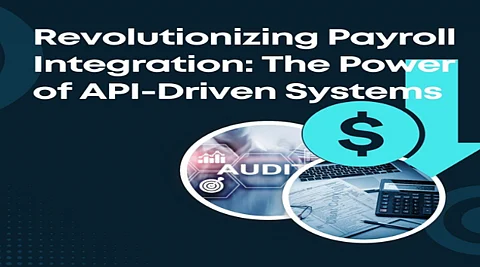

In a world where efficiency and data accuracy are paramount, companies continue to evolve their technological infrastructures. One such transformative leap is the adoption of API-driven solutions to streamline payroll integration systems. The recent research led by Srikanth Gadde delves into this shift, showcasing the benefits of replacing traditional file transfer methods with modern API approaches. By examining this transition, the research uncovers how organizations are reshaping payroll management through seamless, real-time data integration.
For years, traditional payroll integration methods like SFTP (Secure File Transfer Protocol) and specialized formats like PECI and PICOF have been the backbone of human capital management (HCM) systems. While these methods served their purpose in earlier stages, they have increasingly proven to be inefficient. These systems, which rely on scheduled data transfers and batch processing, often suffer from issues such as delayed synchronization, manual data entry errors, and complicated error-handling procedures. The inability to provide real-time updates and error detection exacerbates the challenges of payroll processing, particularly in large-scale enterprises where accuracy and compliance are non-negotiable.
With businesses moving towards faster and accurate operations, modern integration approaches have demanded attention. API-driven solutions and, particularly, REST APIs have now come to be the accepted alternative. Unlike conventional methods, these APIs render an event-driven, real-time data sync that could reduce the payroll adverse effect of time.
Report-as-a-Service (RaaS), a new age API architecture pattern, further adds to this by having an opportunity for an external system to extract payroll data in some preformatted standard format. Such a paradigm, where the exchange of information is much faster and less prone to errors, provides organizations with much more flexibility and control over their payroll systems.
If there is one advantage offered by payroll API integration, it is in the domain of security and compliance. Conventional practices involving file-based security policies have their purpose, although they are certainly not as rigid as API security procedures. API security employs OAuth for access control and TLS for encrypting data-in-transit, thus preventing and reducing the risk of leakage or unauthorized access to the data.
In fulfillment of the above, API also establishes audit trails that go into every infinitesimal detail of every transaction, which is of paramount importance to comply with standards such as GDPR, SOX, and other industry norms. These trails thus offer end-to-end visibility into data flows so they could be monitored and validated for any issues arising out of payroll processes, thereby ensuring that they remain compliant and secure.
Another point to support the operational efficiencies of API-based integration. In the case of traditional techniques, delays in data synchronization might jeopardize the parity between payroll and HCM systems, which ultimately affects a business's performance. APIs provide real-time updates and validation, eliminating such conflicts and allowing for less errors to be either tracked or manually dealt with.
With reduced need for complex scheduling mechanisms, infrastructure overhead is also reduced, bringing in operational efficiencies. Organizations can now scale well with the system, whereby even with increased volume of payroll executions, the resource utilizations do not rise in tandem. This is what gives companies that are growing or have fluctuating numbers in their workforce a preference for API-driven systems.
While API-driven integration systems may require a hefty initial investment, they save a lot of money in the long run. Traditional integration methods include file-based systems that require expensive infrastructure and manual systems oversight, whereas API integrations tend to lower or limit the maintenance cost in the long run.
The bulk of these savings arises from the lowering of manual intervention needs and errors and from real-time information availability, which helps in better decision-making. On top of this, enhanced data accuracy can lessen the cost associated with errors, such as compliance fines or payroll errors, which are sometimes worth enormous penalties. So, in the end, the operational savings have got to far offset the investment cost of API payroll integration and therefore they remain a viable investment option.
Gardnering changes from conventional to API-based payroll integration has duly thought over and carried out. Successful implementation entails an understanding of the technical and organizational challenges that intervene in such a transition. Hence, it is suggested to get a strategic way of working, stage-wise rollout, through training for technical teams, and more emphasis on stakeholders.
Further, governance structures should be in place to maintain risk mitigation strategies, ensuring the smooth transition without disruptions. Best practices for data validation and reconciliation must also be incorporated by organizations during this movement to ensure the safety of data.
In Conclusion, Looking to the Future. The shift from traditional payroll integration systems toward the current, API-driven architectures marks a tectonic shift in enterprise data management. According to Srikanth Gadde, embracing REST APIs and RaaS solutions aids in better efficiencies with security and compliance.
Consequently, these systems allow organizations to process payrolls in real time without a hitch, minimize mistakes, and enhance scalability. In all probability, with the continued advancement of API technology, enterprise payroll systems will realize their full potential for the advancement of smarter and nimble business operations.
